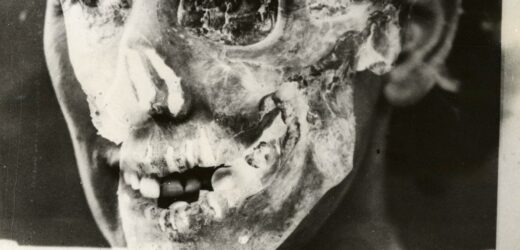On a September morning a young woman glanced over the parapet of a bridge in the small town of Moffat, Scotland. She saw a bundle of fabric, which had a severed arm sticking out of it
Police searched the area and kept discovering body parts – two human heads, thigh bones, legs, chunks of flesh, a single torso and a pelvis. The bloody remains had been wrapped in bedsheets, a pillow-case, children's clothing and several newspapers.
In the history of British crime, such sickening discoveries are sadly not unheard of, but what made this 1935 case special was it came to signify the real birth of forensic science.
As the various body parts were examined in Moffat Mortuary – putting them together gave the case its name, the Jigsaw Murders – it soon became clear the killer had gone to great lengths to conceal the identity of his female victims.
The eyes, ears, skin, lips, and several teeth had been removed from both heads to prevent drawings being made of the victims, or identification from dental records. Chunks of flesh had been cut off body parts where scars of old operations or vaccinations marks may have been. The fingertips had been removed from the one set of hands which had been found.
But the two pathologists made one important conclusion – the grisly butchery had been done with a surgeon's blade.
The next puzzle was finding out when the murders had been committed. For the first in the history of crime scene investigation, maggots taken from the putrefying remains were used to calculate how long the bodies had lain there.
From the skulls it was worked out one of the victims was that of a woman probably between 35 and 45, and that the second body probably aged between 20 and 21. One had been strangled and then stabbed repeatedly, while the other bludgeoned with an unknown instrument.
The experts also estimated the mutilation of the two bodies, which had been drained of blood, would have taken about eight hours to complete. One of the papers the body parts had been wrapped in came from the Lancaster area. But who had committed the crime?
In Lancaster, well-respected Doctor Buck Ruxton was acting somewhat suspiciously.
Police were frequent visitors to his home due to blazing rows between the doctor and his common law wife Isabella over her supposed infidelities.
He had recently told people she, and their housemaid, Mary Jane Rogerson, had taken money from his safe and run off.
However, neighbours who Ruxton had asked for help in cleaning the home because he had a badly cut hand, found large bits of carpet missing, burnt towels, straw on the floor and mysterious stains. The bath had also been cleaned with a caustic chemical.
When questioned by police, Ruxton produced a prepared record of where he had been at the time of the murders, but could not explain why there were bloodstains all over the house, or where he had been driving when he knocked a cyclist off his bike on the road to Scotland. Human fat and bones were also found in the drains leading from the house's bath, and sheets the body parts were wrapped in were exactly the same as others in Ruxton's house.
In another CSI first, to prove Isabella and Mary Jane were the victims, photos of the women were superimposed over their skulls which showed a perfect match. Plaster casts taken of the dismembered feet also fitted into the women's shoes found at the doctor's home.
After an 11 day trial Ruxton was found guilty of murder and hanged.
The case is the subject of a new book, The Jigsaw Murders: The True Story of the Ruxton Killings and the Birth of Modern Forensics, by Jeremy Craddock. It is published by The History Press.
Source: Read Full Article






